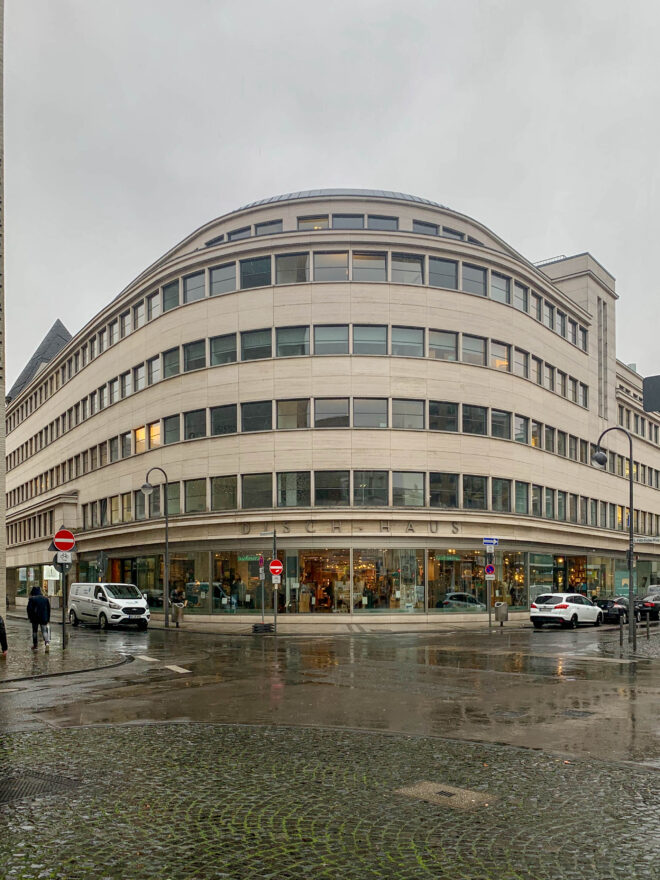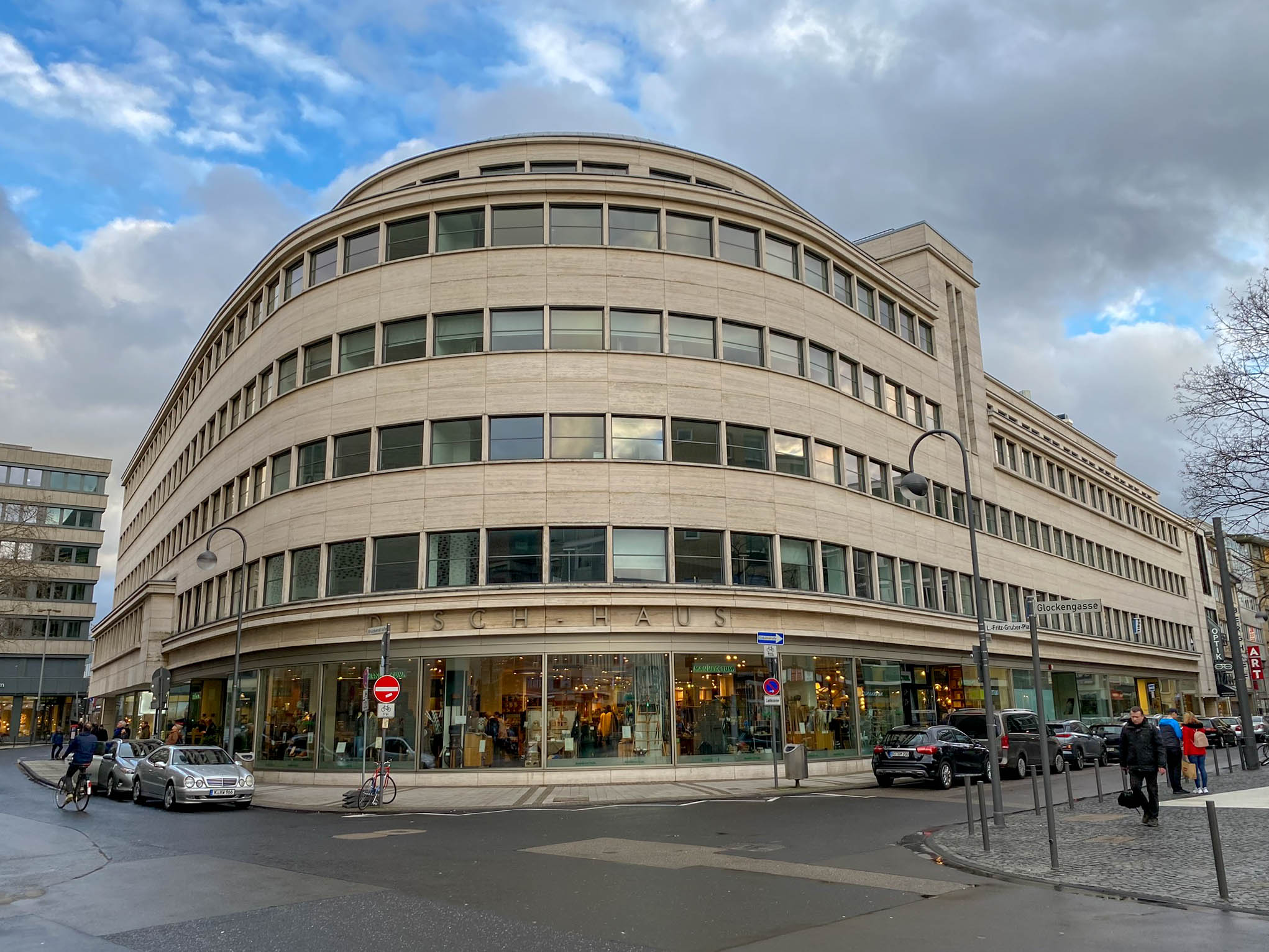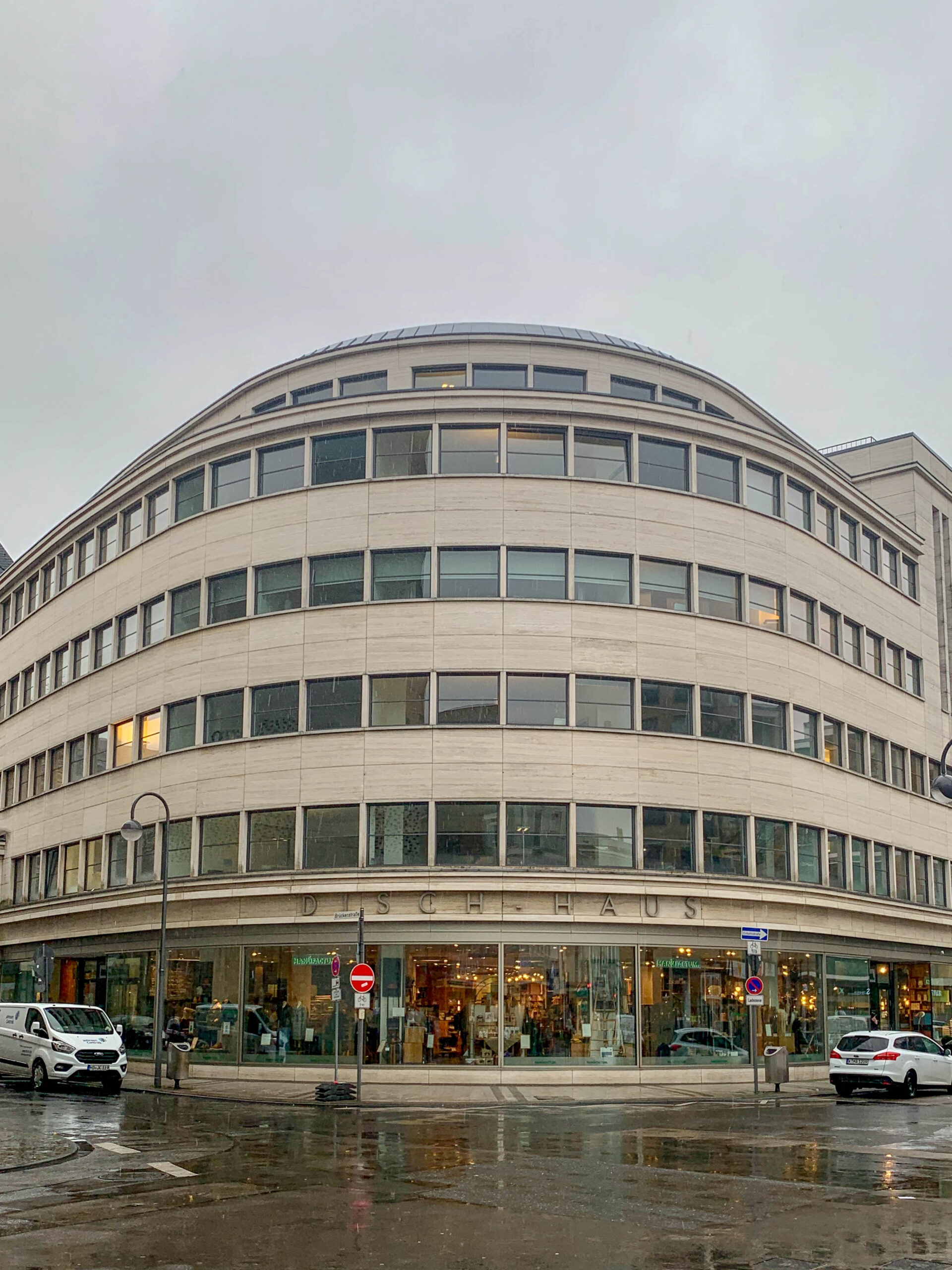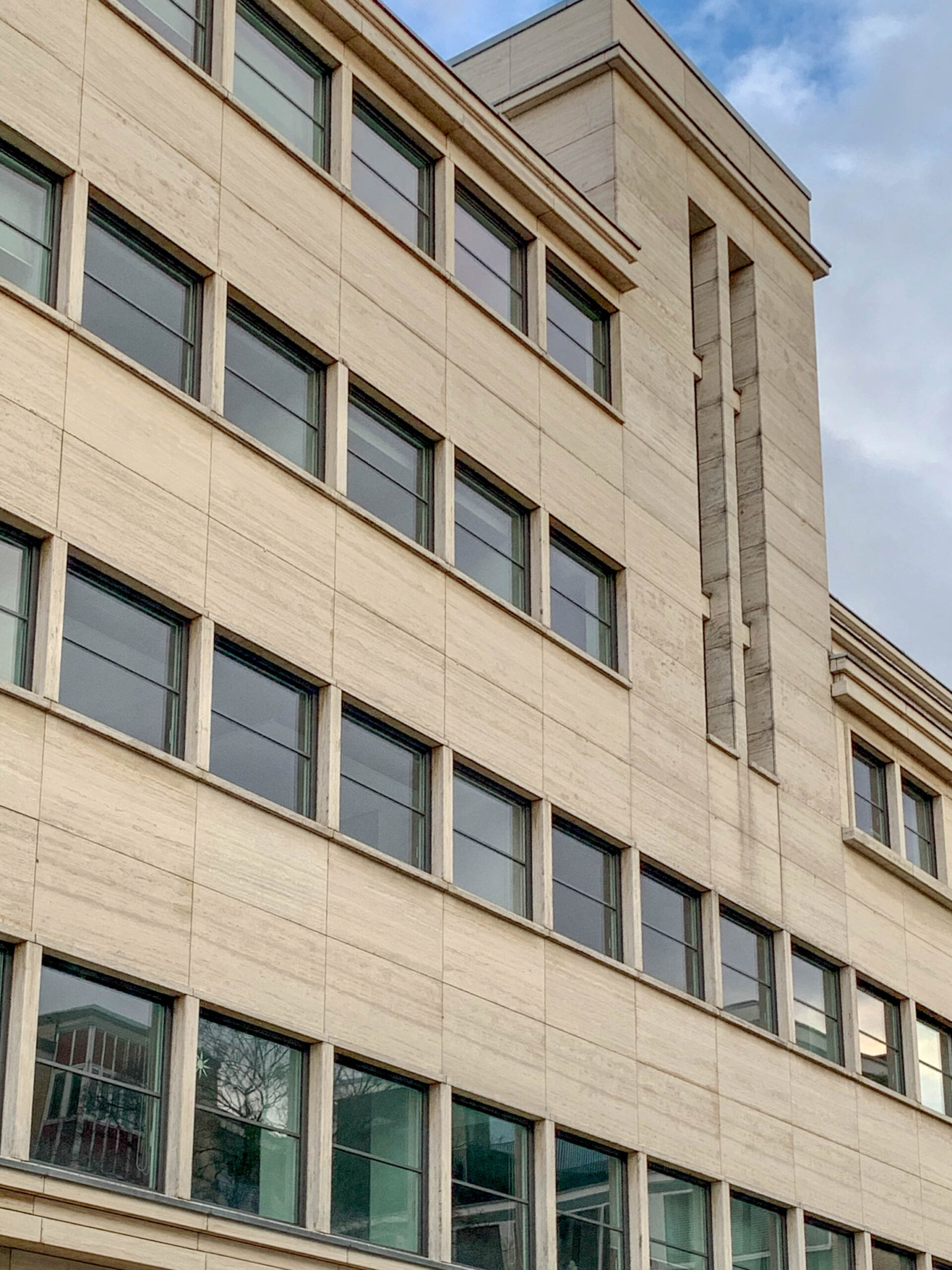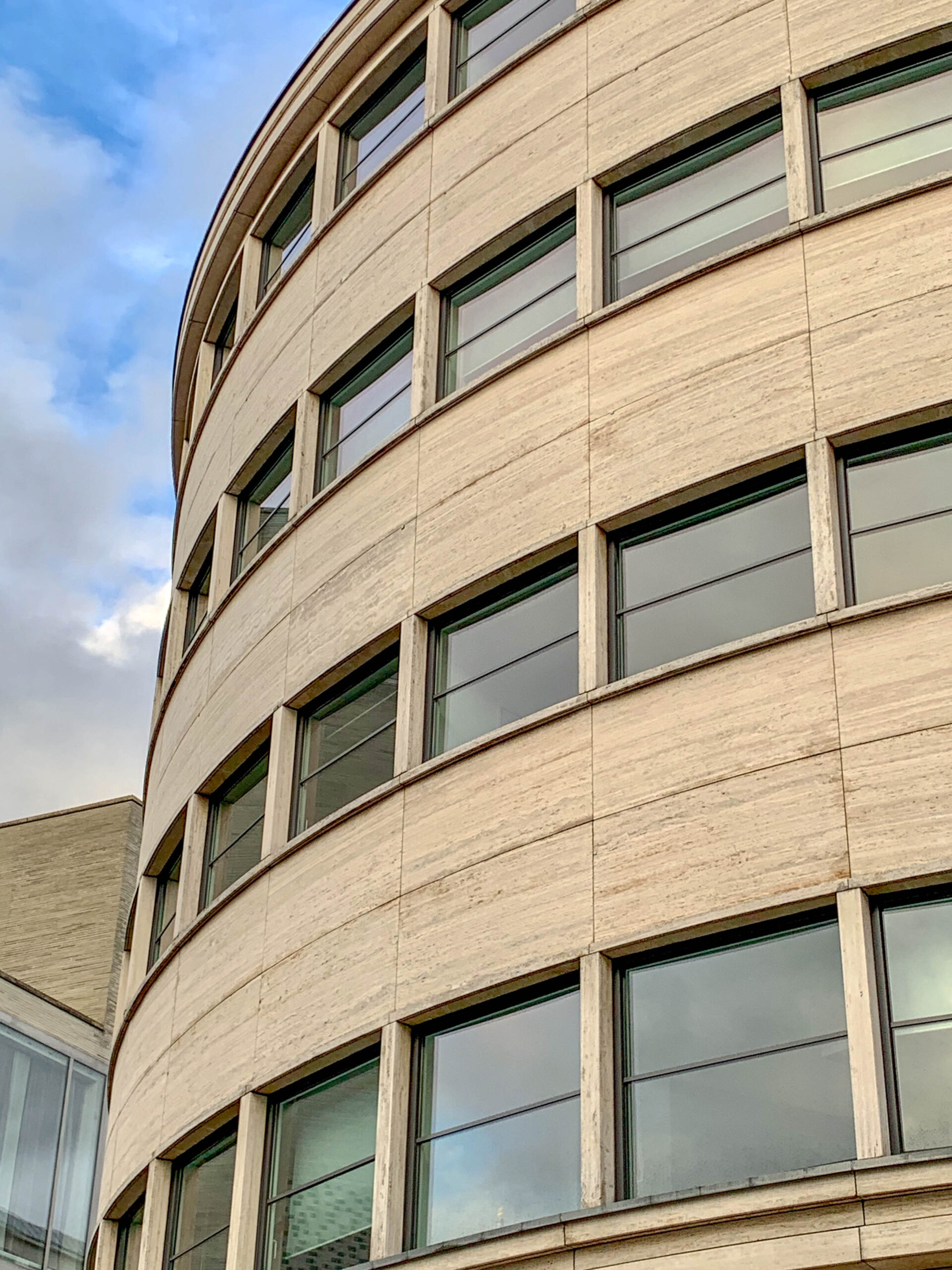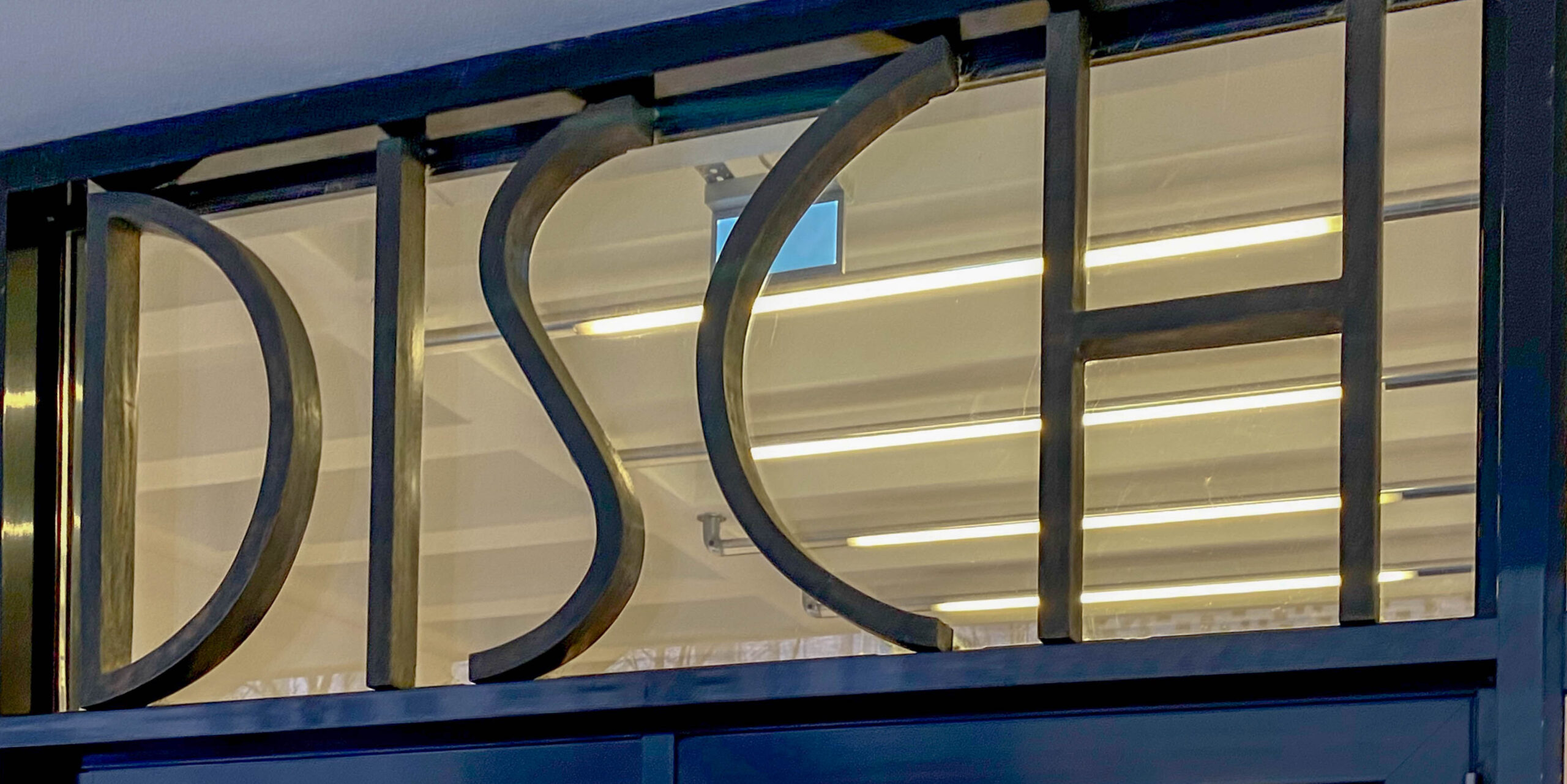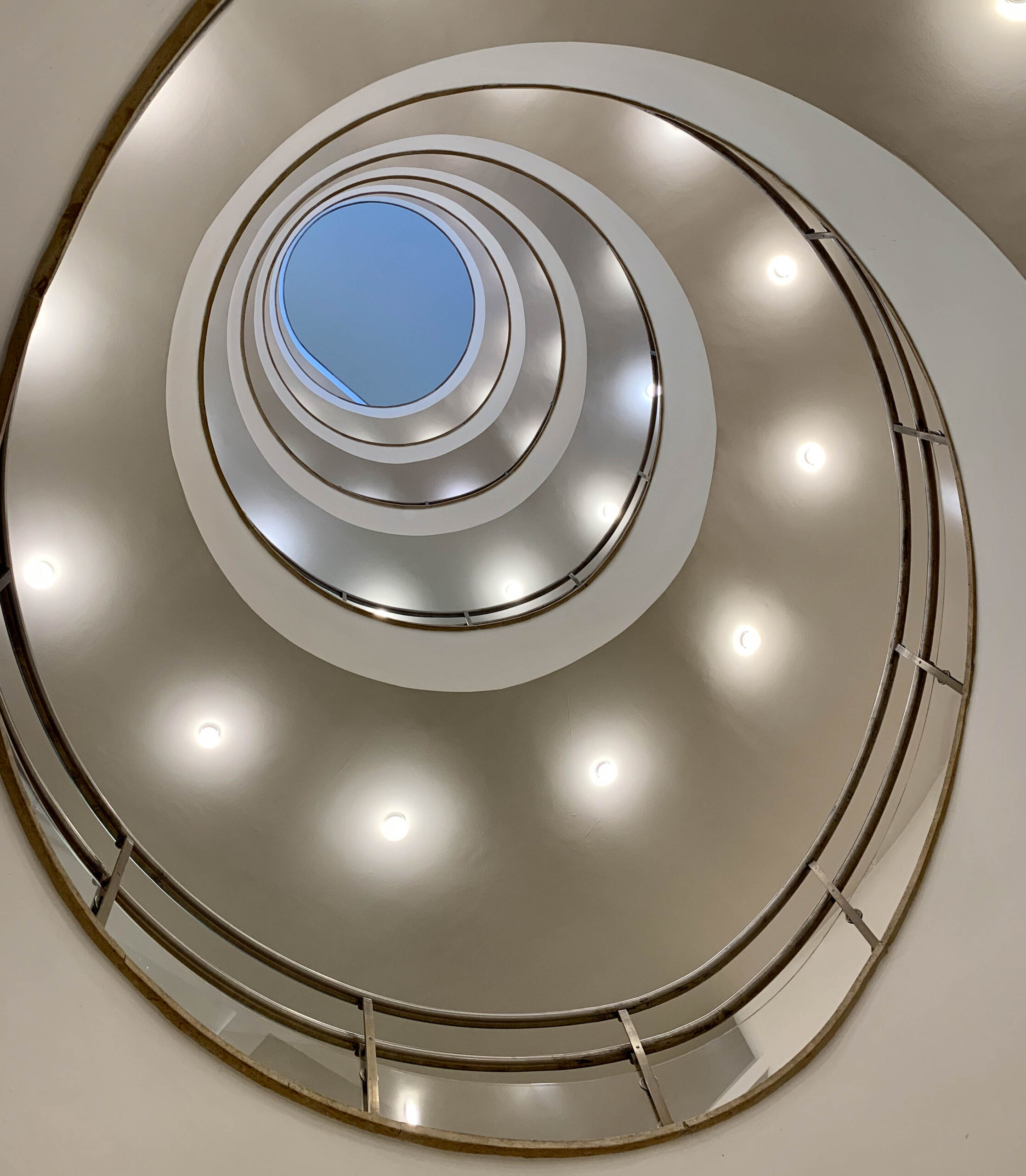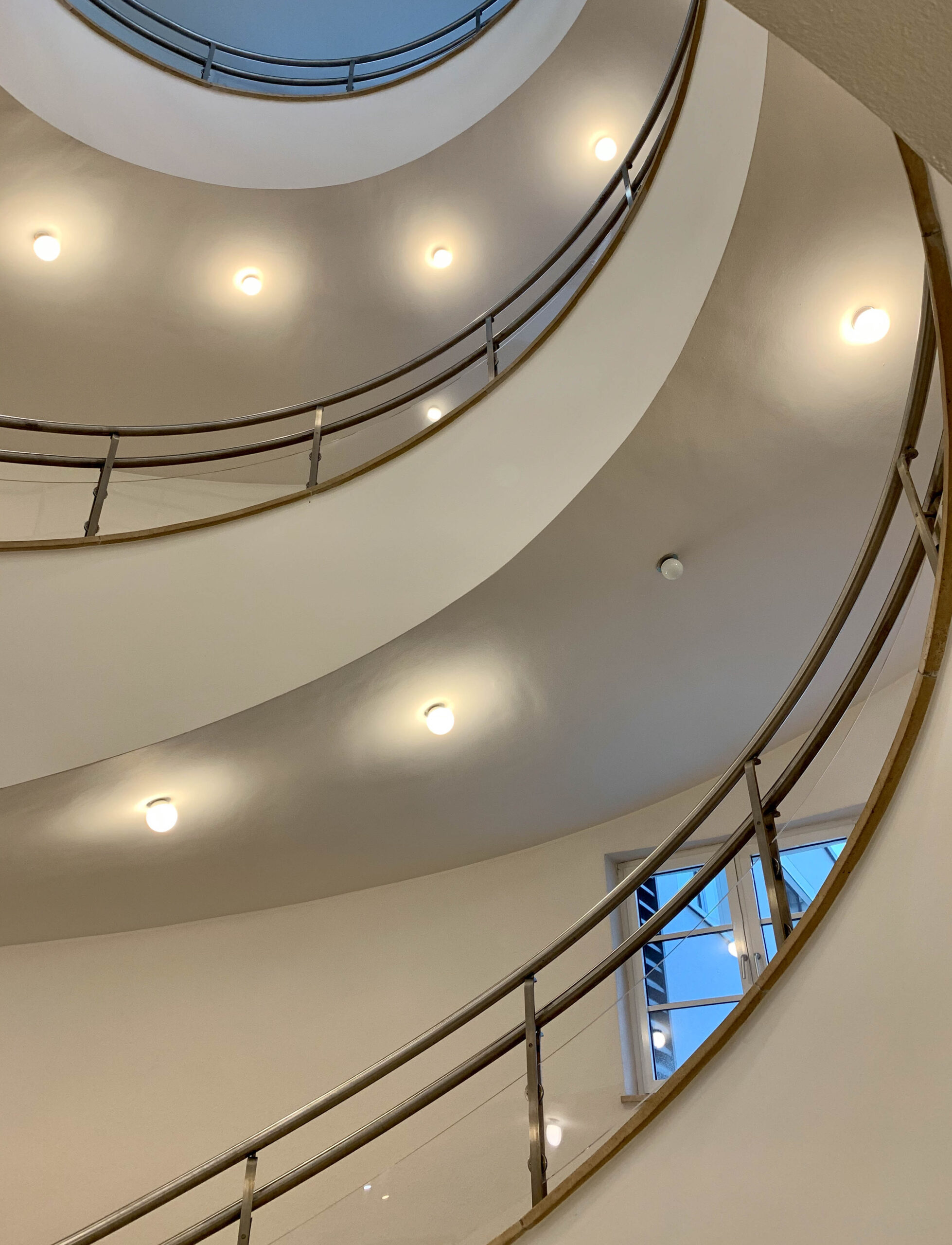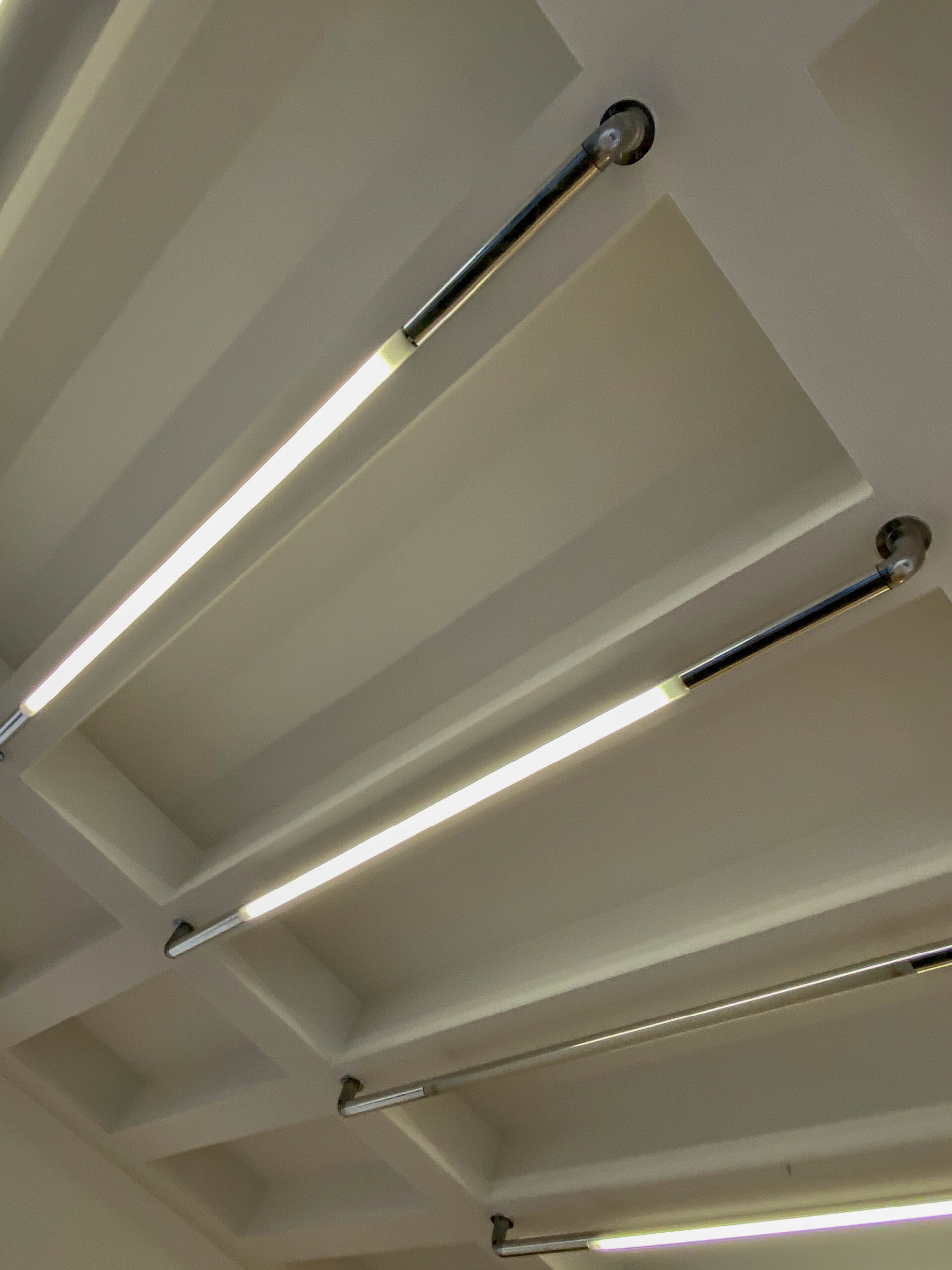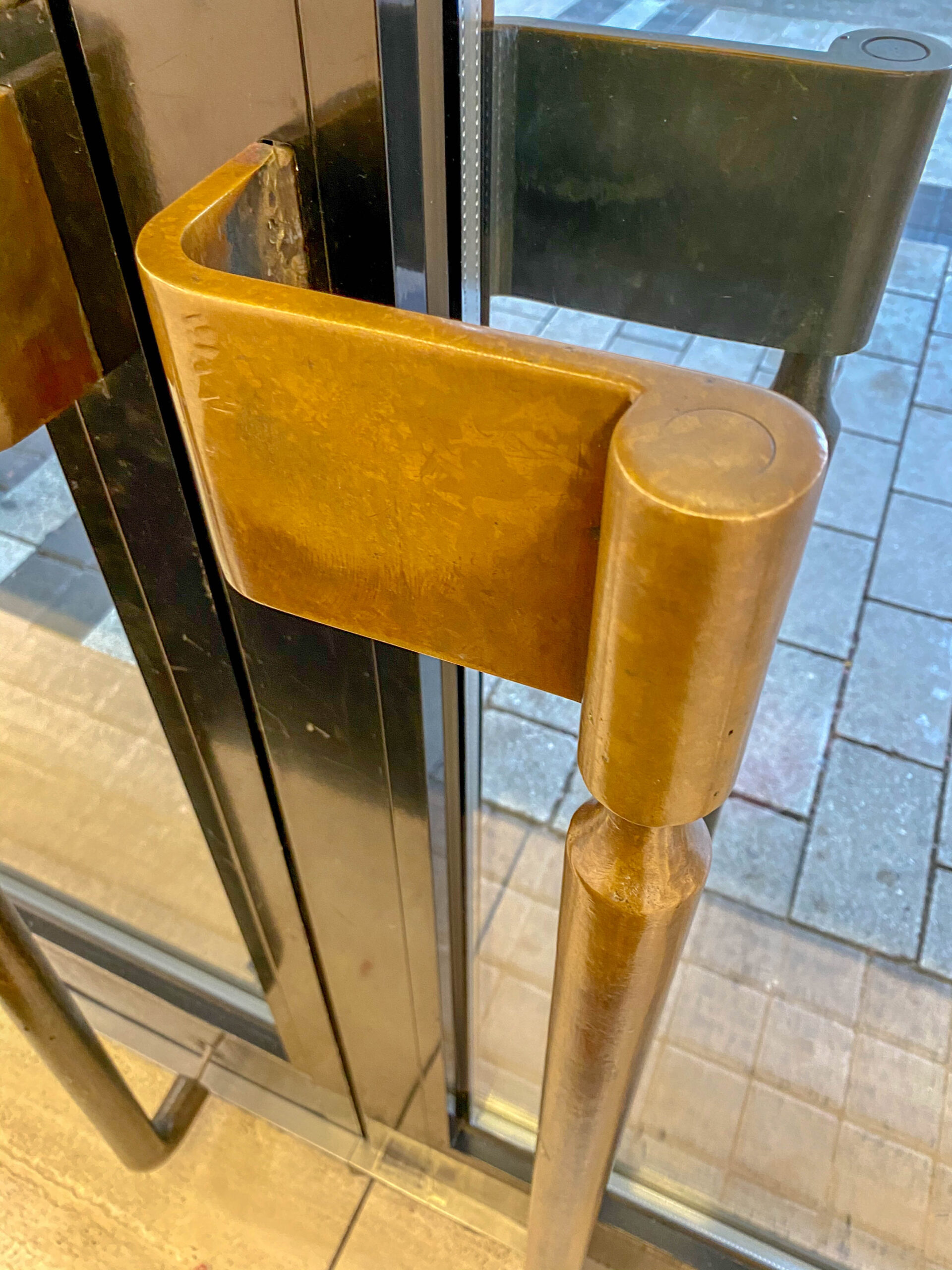1928 – 1930
Architects: Bruno Paul, Franz Weber
Brückenstraße 19, Cologne, Germany
The listed Disch House in Cologne, Germany, was built between 1928 and 1930 to plans by architects Bruno Paul and Franz Werner.
Building
The curved façade of the listed six-storey office and commercial building Disch-Haus, built with a steel skeleton construction, is defined by horizontal window bands alternating with travertine panels.
The horizontal bars of the steel windows further emphasise the horizontal lines.
The right-hand stair tower with its recessed window slots and attached flagpoles is the only vertical element.
The ground floor is continuously glazed with storey-high shop windows.
Competition
Numerous Cologne architects, including Theodor Merrill, Clemens Klotz, Wilhelm Riphahn and Caspar Maria Grod, took part in a competition announced in 1928 for an office and commercial building with about 10,000 square metres of floor space on an almost triangular plot.
Bruno Paul and Franz Weber, who had planned the Sinn department stores in Gelsenkirchen and Essen at the same time, were awarded the contract.
According to Bruno Paul, the rounded corner shape as an infinite curvature was to give the building an unmistakable character.
Interior
He attached particular importance to the prestigious staircase in the interior as well as the advantageous incidence of southern light, the good ventilation of the interior rooms and the possibility of a variable room layout.
The recessed attic and the curved façade evoke associations with naval architecture and Erich Mendelsohn‘s contemporaneous designs for the Schocken department stores in Stuttgart and Chemnitz.
The spiral staircase inside picks up on the elegant curve of the exterior façade.
The top floor fell victim to an air raid during the Second World War, so that today the original roof termination above the staggered floor is missing.
Renovation and Restoration
After various owners and uses, the building was converted and renovated in 2008 by KSP Engel und Zimmermann Architects.

